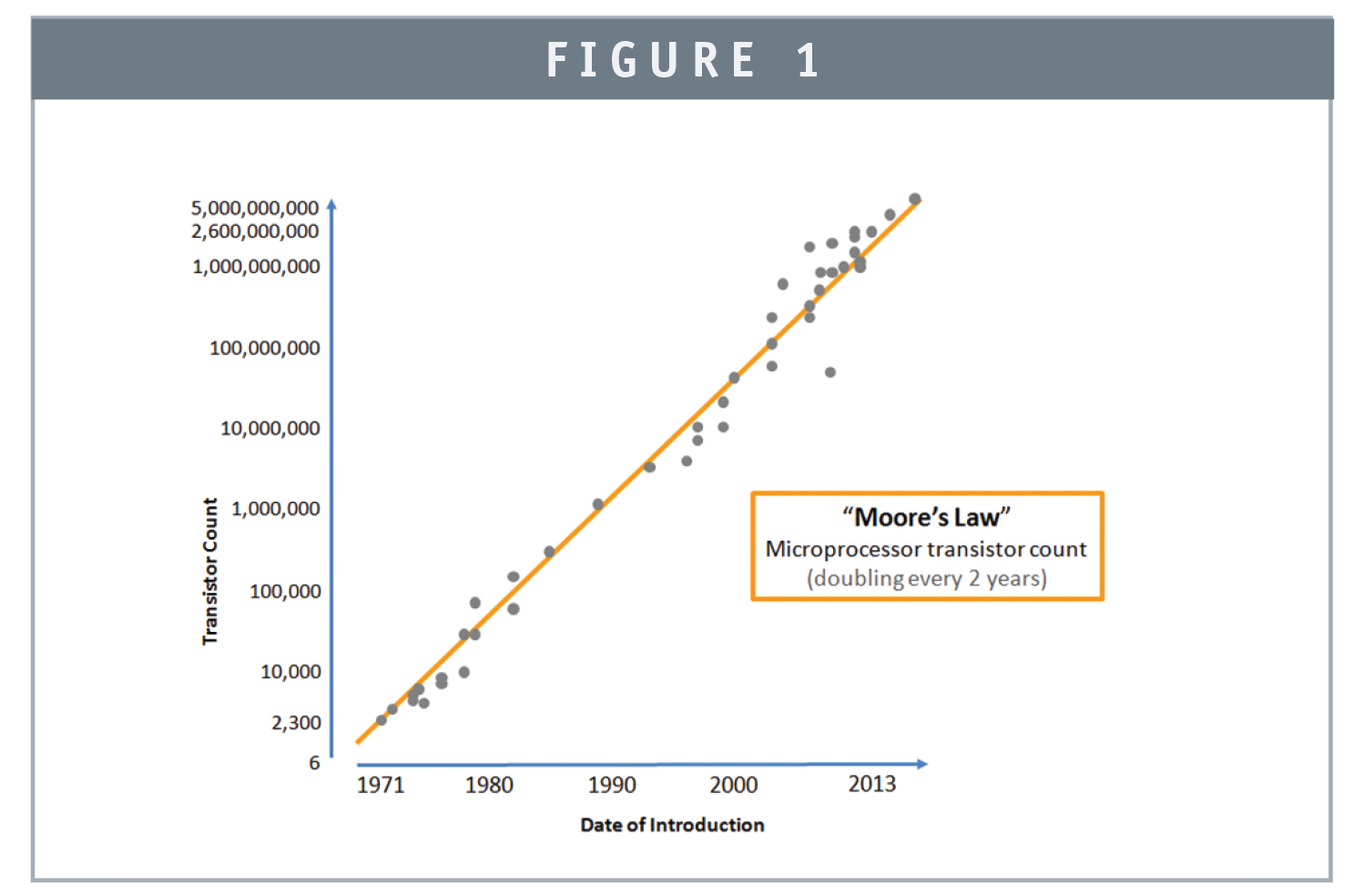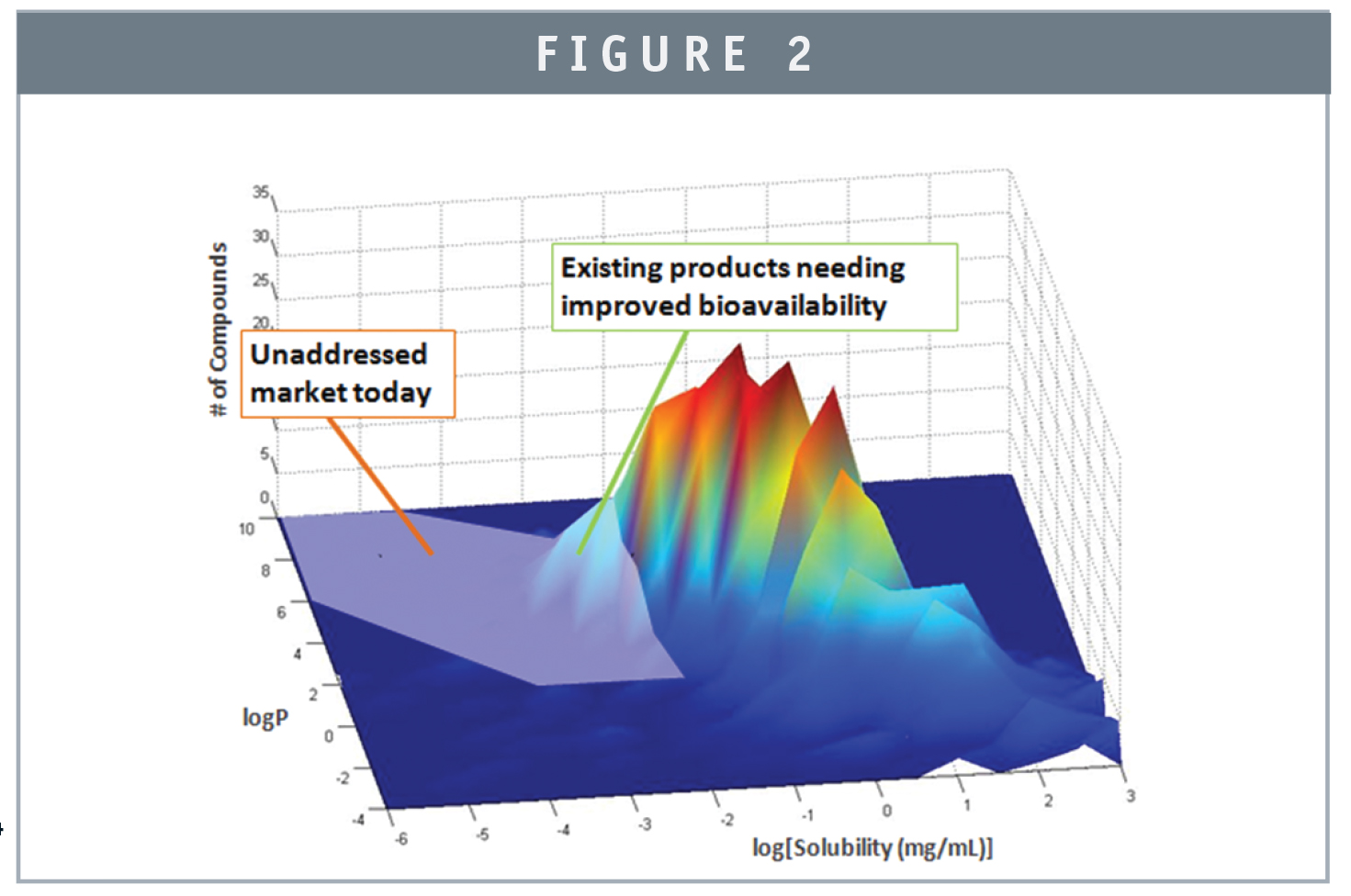Issue:September 2014
BIOAVAILABILITY ENHANCEMENT - Potential for Expanding Chemical Space
“Simplicity does not precede complexity, but follows it.” – Alan Perlis
There are an estimated 6.9 billion unique mobile phone users in the world today, and it is widely thought that this number will exceed the human population by the end of 2016.1 It is clear that mobile phones are no longer just a convenient way to keep track of your teenager via texting, but they are now shaping the very fabric of the global society. Significant discussion is underway regarding the role of mobile phones in everything from the search for democracy to managing the threats of disease outbreak. But did you ever stop to really think about how we got to the point where a minicomputer in your pocket can influence an entire society?
This journey starts at the infancy of modern, transistor-based computing, which is believed to have taken place in November 1953 with the first working prototype at the University of Manchester.2 Initially computer circuit layout was done entirely manually and with only a few connections, thereby it was a tractable problem. But quickly, transistors began to shrink in size and correspondingly the design of the circuits became increasingly complex. The seeds of electronic design automation (EDA) emerged in the 1960s out of the necessity to automate integrated circuit design and virtual prototyping and perform analyses of functionality, performance, and manufacturability – all before manufacturing the actual circuit. This took serious investment in scientific, technical, and engineering innovation, to be sure. As the EDA industry emerged in the early 1980s, in addition to the innovations in manufacturing and the EDA software itself, not inconsequential were new approaches to partition the designs phases, discipline the methodology of design, encapsulate expertise through the use modeling, and accelerate the process using automation. While these four aspects of circuit design were not the only components propelling progress, they were an integral part of enabling circuits integrating a doubling of transistor count every 2 years. In addition to accelerated performance and expanded capacity and capabilities of integrated circuits, with EDA software and the methodologies it imposed, time-to-market timeframes could be accelerated on extremely complex projects. To get an idea of the complexity of a modern electronic circuit, there are now approximately 5 billion transistors on a microprocessor chip – a mere 2 billion less than the number of humans on the entire planet!
Obviously, the growth in computing power has not only enabled the mobile phone but has benefited society in countless ways: from IBM’s Watson to dealing with Big Data in pharmaceutical discovery. All of these things were unimaginable even 20 to 30 years ago. They key point here is that those pioneers of the electronics industry had a vision for the potential computing could have on society, and they employed a disciplined approach to invest in the basic science and technology necessary to create a completely new industry. Without that, we might still be using slide rules.
BIG CHALLENGES, BIG OPPORTUNITIES
In recent columns, we’ve explored the adoption and diffusion of new technologies, and the cultures and character traits that foster innovation itself. In this month’s column, my goal is not to focus on scientific and technological breakthroughs in solubilization, but on considering what might be achieved if we borrow best practices and processes that have assisted other industries facing growing complexity.
These are exciting times in our industry. Rapidly evolving technology, such as solubilization, targeted delivery, nanotechnology, and robotics has enhanced drug discovery and development. This, coupled with exciting new research in the areas of systems biology, genomics, proteomics, epigenetics, and computational modeling, has expanded the potential target space for new therapeutics with the promise of addressing currently untreatable diseases and improving the quality of life. Personalized medicine is becoming a quantifiable goal that many believe will be realized, and we are beginning to see treatments that are curative in cases where the standard of care was thought to be chronic therapy. At the same time, and perhaps because of these changes, the molecules in development are presenting unprecedented challenges for formulators and drug delivery experts.
THE POTENTIAL FOR SOLUBILIZATION
The growing need for enhancing the bioavailability of drugs to meet unmet medical needs is obvious. Industry data shows that 70% to 90% of drugs in development are poorly soluble. We have performed an analysis using a database of over 1300 marketed drugs, analyzing compound solubility and logP (water-octanol partition coefficient) that revealed that the (log normal) distribution centers on a solubility of 100 micrograms/mL and a logP of nearly 2.2. Assuming a similar density of compounds compared to historical trends, shifting this distribution to just a slightly higher logP and lower solubility, e.g., a solubility of 10 micrograms/mL and logP of ~4, we estimate that 450 new, yet-to-be-discovered drugs could be enabled using solubilization technologies.3 And we calculate that this would expand the accessible market by 35%, representing nearly $140 billion in industry revenue in today’s dollars. This is promising, as our analysis assumes no breakthroughs in solubilization technologies themselves, but only better utilization of those in place today.
LEVERAGING LIMITED RESOURCES
There is a significant amount of solubilization expertise in the industry, but it would be difficult to keep up with demand given the growing number of insoluble drugs in clinical development, estimated at between 2,300 and 3,200.4 In addition, no matter how much human expertise exists, the pressure for fast-tracking formulation and then subsequent clinical trials materials manufacturing underscores the cost and time-to-market pressures that are directly correlated with human and financial resources. The standard methodologies for formulation development in use today could benefit from ways in which existing expertise is leveraged and no quality is lost while handling an ever-increasing volume of drugs requiring solubilization.
CREATING KNOWLEDGE FROM DATA
The complexity involved in bringing modern medicines to the clinic today exceeds the abilities of any one person or even teams to apply empirical approaches in search of the best solution. Wherever experience-based methodologies are employed as the primary method development process, there’s a significant opportunity for improvement. With the combination of specifications as noted above and robust modeling, formulating for greater bioavailability can be done in a manner that is faster and more repeatable. Accelerated, more rigorous and more accurate in silico exploration of drug and excipient combinations unimagined today can enable us to explore the chemical space that needs to be accessed for all of us to achieve greater solubilization success. Automation, combined with modeling, can deliver greater predictability and result in a higher-proportion of drug candidates that successfully navigate through the clinic.
Certainly, much of the advances in accelerating our solubilization processes are already borrowed from other industries, in many cases even the technologies themselves.5,6 And more directly related to the electronics industry, we benefit from the computational power that continues to provide us the engines to accelerate our solubilization efforts. As a group tackling bioavailability challenges, let us be inspired by our potential to add similar disciplines and practices as those adopted by others. In so doing, we can more easily benefit from advances in computer technologies, and propel the development and delivery of solubilized drugs across the finish line.
REFERENCES
1. http://mobithinking.com/mobile-marketingtools/latest-mobilestats/a#uniquesubscribers.
2. http://en.wikipedia.org/wiki/Transistor_computer.
3. Agere analysis
4. Agere analysis of drugs in development and historic percentage of all drugs achieving FDA approval in 2013, and range of estimated insoluble drugs at between 70% and 90%.
5. http://en.wikipedia.org/wiki/Mortar_and_pestle;http://en.wikipedia.org/wiki/Micronzation;http://www.microchem.it/E/history.html.
6. http://www.rjpbcs.com/pdf/2012_3(1)/101.pdf; Sekiguchi K, Obi N, Studies on absorption of eutectic mixtures. I. a comparison of the behavior of eutectic mixtures of sulphathiazole and that of ordinary sulphathiazole in man. Chem Pharm Bull.1961;9;866-872.
To view this issue and all back issues online, please visit www.drug-dev.com.

Total Page Views: 2663











